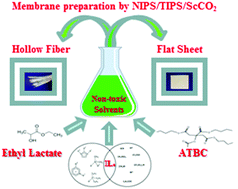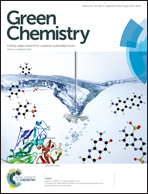Towards non-toxic solvents for membrane preparation: a review
Abstract
Solvents are used in every chemical process and affect its overall safety, environmental, and economic impact. Membrane processes have attracted increasing interest as sustainable alternatives to traditional technologies, being characterized by reduced energy consumption and use of chemicals. However, the most important membrane preparation techniques are often based on the use of toxic solvents, which reduces the benefit to the environment. Due to the influence of solvent properties such as viscosity, dielectric constant, polarity, and boiling point on the final features and the indispensable prerequisite of dissolving the selected polymer (at room or high temperature, depending on the technique), one of the most difficult but most interesting challenges for membrane scientists is replacing these solvents, such as N,N-dimethylformamide (DMF), N,N-dimethylacetamide (DMA), N-methyl-2-pyrrolidone (NMP), and tetrahydrofuran (THF), with safer alternatives. In this review, the most relevant steps towards the use of non-toxic solvents in membrane preparation are reported, focusing particular attention on the non-solvent induced and temperature induced phase separation (NIPS and TIPS) techniques. Supercritical CO2 (ScCO2) and ionic liquids (ILs) are promising examples of benign solvents, and their use in membrane preparation will also be described. The total replacement of toxic diluents with greener alternatives still remains at the beginning stages. However, in several cases, membranes prepared using less/non-toxic solvents achieved performance comparable to those produced with classical toxic solvents. This review offers valid support for membrane scientists who wish to reduce the environmental impact of solvent use and increase membrane processes sustainability.


 Please wait while we load your content...
Please wait while we load your content...